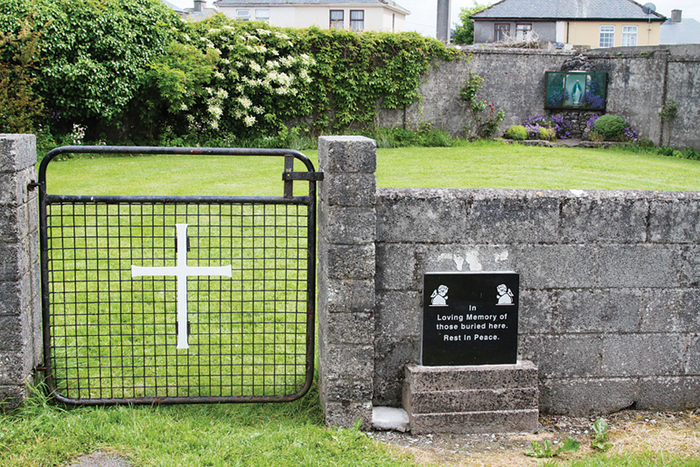One of the less edifying aspects of politics is the tendency of some practitioners to engage in the rhetoric of competitive moral outrage. The Tuam Mothers and Babies Home scandal is a case in point. The Oireachtas has heard in each House genuine and moving personal accounts from survivors of the Irish system of dealing with unwanted pregnancy in the first half of the twentieth century. That was good and wholesome.
But we also witnessed this week the self-indulgent rhetoric of competitive outrage – the subtext being “Look at me. I am more morally appalled than most others, and I am better able to express my outrage than anyone else.”
There was something toe-curlingly awful about the Taoiseach’s contribution in the Dáil on the subject of Tuam this week. Not for the first time, he came into the Dáil armed with a cleverly written, mordant condemnation of appalling Roman Catholic double standards. Somewhere in Government Buildings there is a gifted script-writer from whom this topic brings forth great lines.
The problem on this occasion was its delivery – which was just awful. In auditions for an amateur dramatics society, the director would have stopped it half-way through with an emphatic “Next please!” The Taoiseach, alas, came across as phony, contrived, forced and false – as a ham actor feigning instant, emotional outrage.
Which was a great pity – because the work of the Commission of Investigation chaired by Judge Yvonne Murphy has a difficult task to perform – which task needs to be carried out in a calm, truthful, and careful way. Survivors and relatives of those in these homes need confidence that the task will not be enlarged to the point where we will wait many years for conclusions. Overblown rhetoric adds nothing to the process of uncovering the truth – still less to the process of learning from that uncovered truth.
Part of that truth is this.
In 1934, the Archdiocese of Tuam held its annual Clergy Conference. Among other topics discussed and minuted was the “scandal of illegitimate births”. The minutes of the Conference had this to say:
“Whenever an illegitimate birth occurs in a parish, and is publicly known, the scandal ought to be denounced without mentioning names, with a view to calling the guilty to repentance and as a deterrent to others. The denunciation ought to be in sorrow more than in anger and the preacher ought to point to the scandal as:
A grave sin against the sacrament of matrimony and against the sixth commandment,
A degradation of the soul,
A disgrace to the family,
A sin against the good name of the locality.
Not only is the general permission given, but a direction is also given, to make this denunciation. In a special case, after consultation with His Grace the Archbishop, the matter may be deferred for a time. But in every case the scandal is to be immediately referred to the archbishop.”
As Kieran Waldron, an astute clerical historian of the Tuam archdiocese, commented in 2008, this procedure “would create horror to modern sensibilities” but remained in common use in Ireland until the 1950s.
A “letter of denunciation” from the Archbishop was accordingly read at local masses, which, while using no names, effectively presaged the expulsion of the mother from the local community.
To avoid this public obloquy and the personal and family disgrace, pregnant unmarried girls were quietly banished with clerical assistance to mother and baby homes for their confinement and often for a post-natal period of work-service which sometimes extended into a lifetime of utterly lonely servitude.
Cruel and utterly wrong to our eyes is the very idea that the preservation of church and social morality in those days required not merely those steps, but also ordained the destruction of the relevant mother-child relationship – the extinction of the natural relationship of love and nurture of a mother for her child – and all to serve and preserve the supremacy of the Church’s version of Natural Law in relation to sexuality and marriage.
Apparently the avoidance of “scandal” simultaneously demanded the public denunciation of defenceless. unmarried mothers, on the one hand, and the systematic concealment of clerical sexual abusers with their victim sworn to secrecy on pain of excommunication, on the other hand.
This we all know – and this we all have known.
Mortality rates in the Tuam home and disposal of the babies’ bodies are not the only scandal – they are also the by-product of the deeper scandal of a religious and social culture that seems so cruel, and yet so recent, to the modern world.
The irony of the situation is that such injustice and such contradiction of the contemporary understanding of the core of Christianity is based on a Thomist view of sexuality and marriage which has in the meantime crashed the contemporary Roman Catholic Church onto the rocks – and appears to have made it into an institutional shipwreck in Ireland.
That navigational error was not just the result of Humanae Vitae – the 1968 reiteration of the papal condemnation of birth control; the broader celibate Church’s utter failure to comprehend sexuality – and its age-old obsession with its own misunderstanding of sexuality – seem to guarantee that no-one can now drag it off those rocks.
The same moral force and authority – the magisterium if you like – that enabled the social and moral hegemony of a Jansenist Roman Catholicism to hold such sway in Ireland between 1850 and 1960 – now seems intent on devouring the goodwill and beliefs of an entire generation of would-be Christians in Ireland.
A far cry, I think from Tom Kettle’s poetic, “For a dream born in a herdsman’s shed, and for the secret Scripture of the poor”.

